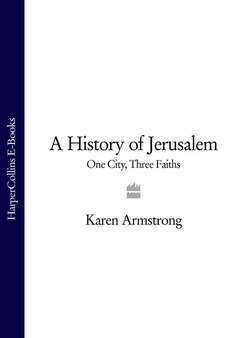Читать книгу A History of Jerusalem: One City, Three Faiths - Karen Armstrong - Страница 6
New Foreword
ОглавлениеThis book was first published in 1996. At that time, the situation in Jerusalem looked extremely grave and it was difficult to see how the conflict between the Israelis and the Palestinians could be resolved. But at least people were talking about peace. Despite the tragic death of President Yitzhak Rabin, the Oslo Accords were still in place, and, though there were obvious difficulties and religious extremists on both sides continued to oppose a peaceful settlement, progress was made. Both the Israelis and the Palestinians benefited from the cessation of hostilities, politically, socially and economically. As I write this, in the fall of 2004, this seems a halcyon period. The situation in the Middle East has deteriorated and now threatens the security of the entire planet. Our world has irrevocably changed and yet it is also true that in Jerusalem not very much has changed at all.
In the summer of 2000, Ariel Sharon marched onto the Haram al-Sharif with a crowd of supporters, a symbolic gesture designed to be provocative. Sharon was regarded as the architect of the settlement movement in Gaza and the West Bank. Now he was tacitly threatening to occupy the Temple Mount. Immediately violence broke out in Jerusalem and the Second Intifadah began. It was the beginning of the end of the peace process. Today the Oslo Accords are in ruins, Palestinian militants have launched a devastating series of suicide bombing attacks, and the death toll on both sides of the conflict has been horrific.
On September 11, 2001, nineteen members of al-Qaeda, a terrorist organization headed by the Muslim extremist Usama bin Laden, attacked the World Trade Center and the Pentagon. This has inevitably affected the situation in Israel and Palestine. Relations between the Islamic world and the West have reached an all-time low, and Jerusalem can be regarded as the bleeding heart of the problem. All sides continue to identify with it at a profound level.
For Jews, the possession of the Holy City continues to have healing power; they see Jewish Jerusalem rising phoenix-like from the ashes of Auschwitz. In constant danger from suicide attacks, an increasing number of Israelis can no longer imagine sharing the city with the Palestinians. Muslims also feel beleaguered as a result of the “war against terror” launched by the United States after September 11. Many see the loss of Muslim Jerusalem as a symbol of their impotence in the modern world.
In the United States, the Christian Right has also hardened its position. They have long believed that the final battle of Armageddon will be fought outside the city, and that Jews must be present in the Holy Land in order to fulfil the ancient prophecies (even though all unbaptised Jews will be massacred by the Antichrist). During the Cold War, Christian fundamentalists regarded the Soviet Union as the Antichrist; since September 11, they have come to believe that Islam will fulfil this role. Their apocalyptic views have an undoubted influence on American policy in the Middle East.
And yet, as this book shows, Jerusalem has for centuries been a symbol, surrounded in people’s minds with an aura of associations that have made it sacred. They found their God in the Holy City and it thus became inseparable from their deepest selves. People have always experienced God not simply as a transcendent reality “out there” but also in the ground of their being. When Jerusalem was threatened, they felt personally attacked; when its sanctity was violated, they experienced this as a rape. Today everybody feels threatened; everybody is in danger; everybody is on high alert in the expectation of a terrorist attack. As a result, Jerusalem has become more sacred to their identity than ever before.
This book traces the explosive history of Jerusalem, and the atrocities that have been committed in its name. But it also shows that for centuries Jews, Christians and Muslims were able to live amicably together there. Peaceful coexistence in the Holy City is not an impossible dream. If Jerusalem has become the symbolic heart of the conflict that now threatens the whole world, a solution is a matter of the highest importance. It will require imagination and commitment to find a solution to the problem of Jerusalem; everybody will have to make sacrifices; everybody will have to compromise in the interests of peace. But people were able to share the Holy City once, and they can therefore do it again.
